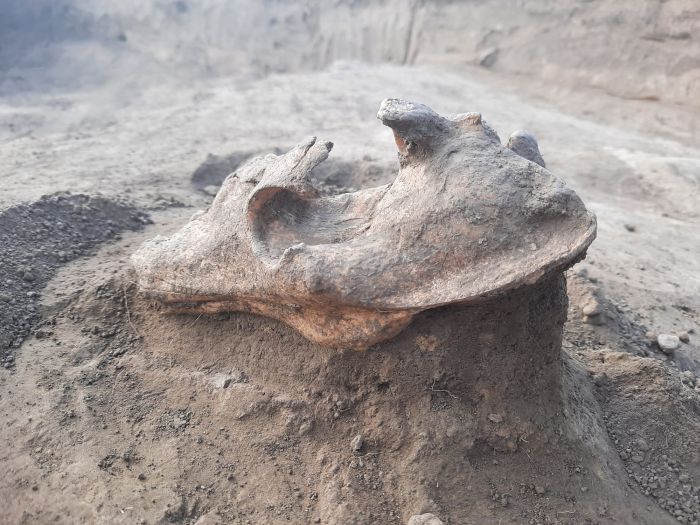 CHEIA, ROMANIA—According to a Science in Poland report, a team of researchers led by Valentina Voinea of Romania’s National Museum of History and Archaeology and Bartłomiej Szymon Szmoniewski of the Polish Academy of Sciences examined two second-century A.D. graves found in a heavily plowed burial mound in southeastern Romania. The first grave, located in the center of the mound, consisted of human remains thought to have been placed in a wooden box with grave goods and then burned in a pit. This grave had been looted in antiquity. When the robbers left, they closed up their hole, covered it with stones, and placed a wolf skull on top of them to prevent the spirit of the deceased from exiting the burial and taking revenge, Szmoniewski suggested. The second grave held the skeletal remains of a person thought to have been buried in a wooden coffin with a glass vessel of fragrance. A bronze coin minted between A.D. 125 and 127 during the reign of the Roman Emperor Hadrian was found in the skeleton’s mouth. The coin was likely intended to be used as payment to Charon for transporting the soul of the deceased across the River Styx in Hades, Szmoniewski explained. He thinks the dead may have been Romans who had traveled to the area, while the looters may have been local Dacians. To read more about Roman finds in Eastern Europe, go to "Roman River Cruiser."
CHEIA, ROMANIA—According to a Science in Poland report, a team of researchers led by Valentina Voinea of Romania’s National Museum of History and Archaeology and Bartłomiej Szymon Szmoniewski of the Polish Academy of Sciences examined two second-century A.D. graves found in a heavily plowed burial mound in southeastern Romania. The first grave, located in the center of the mound, consisted of human remains thought to have been placed in a wooden box with grave goods and then burned in a pit. This grave had been looted in antiquity. When the robbers left, they closed up their hole, covered it with stones, and placed a wolf skull on top of them to prevent the spirit of the deceased from exiting the burial and taking revenge, Szmoniewski suggested. The second grave held the skeletal remains of a person thought to have been buried in a wooden coffin with a glass vessel of fragrance. A bronze coin minted between A.D. 125 and 127 during the reign of the Roman Emperor Hadrian was found in the skeleton’s mouth. The coin was likely intended to be used as payment to Charon for transporting the soul of the deceased across the River Styx in Hades, Szmoniewski explained. He thinks the dead may have been Romans who had traveled to the area, while the looters may have been local Dacians. To read more about Roman finds in Eastern Europe, go to "Roman River Cruiser."
Burial Mound in Romania Held Possible Roman Graves
